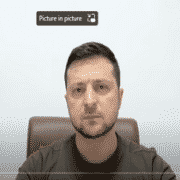Do you know how to build rapport?
Rapport is that easy-going relationship which good speakers have with their audience, indicating that they understand their world.
But in business presentations, the quality is often as elusive as it is desirable.
Like the concept of gravitas (which we can help with too, by the way), it’s also something that critics suggest presenters try to convey when talking to others – even if they are at a loss when it comes to explaining how to do so.
These three tips are essential:
Engage
The best presenters seize the audience’s attention from the very start, indicating immediately that they understand where their listeners are coming from. Of course, this is considerably easier if you are recognised as “one of them” already.
Take the brilliant Rita Pierson, a teacher for 40 years, carrying out a TED Talk to fellow educationalists in 2013 just before she died. Her opening words did lots of heavy-lifting on her behalf: ‘I have spent my entire life either at the schoolhouse, on the way to the schoolhouse, or talking about what happens in the schoolhouse.’ That sentence also demonstrates clever use of the “power of three” approach and is gently amusing (a genuinely useful quality; the audience’s positive reaction can be heard before the line is finished):
Eye contact helps, it’s true. Pierson manages this admirably – but despite the fact her presentation is in-the-round, even those seated behind her seem to be following her every word. As Terry Wogan, probably the best broadcaster of his generation, proved on his Radio 2 Breakfast Show; rapport doesn’t need a visual connection at all.
Empathise
But what if you as a presenter have little in common with your audience? What if you have little or no connection with their world? Perhaps you don’t even speak their language? None of this need be a barrier to building rapport – as Ukraine President Volodymyr Zelensky has demonstrated repeatedly in the last few weeks. When he addressed British politicians in the House of Commons via video link, as his country continued to battle the Russian invasion, he quoted the English bard Shakespeare (‘The question for us now is to be or not to be…’) and echoed Britain’s wartime leader Churchill (‘We will fight in the forest, in the fields, on the shores, in the streets…’). His words eliminated the one-and-a-half-thousand miles between Kyiv and London, and was nothing less than a stroke of genius:
Despite the huge losses to his country and the considerable risks to himself, Zelensky’s ability to take time to strike a chord with each of his separate audiences is remarkable – as my colleague Lindsay Williams points out in a recent interview with Fortune magazine (‘He does what all good public speakers do – he looks at his audience and thinks, “How can I make them relate to me?”):
Enthuse
Finally, rapport is impossible if you are dull. Not only do you need to use simple words (even if you are conveying complex material – indeed, I would argue especially when you are conveying complex material; we call it “coming down the language ladder”), but you should also craft powerful key phrases so that they become more memorable. Using metaphor and simile can both help here (we call it adding “sizzle”). It’s also about using the full bandwidth of stress and emphasis so that – even if you are reading from a script – it sounds like you are having an animated and interesting conversation with your listener by “lifting the script off the page”. Our presentation training course covers these aspects in full.
I am also teaching exactly this, and a few other tricks and tips, to a new generation of broadcasters in my Podcast Training.
So, as you can see, rapport doesn’t need to be that hard-to-pin-down, ethereal quality which many recognise but few can explain. It should be as much a part of your nuts-and-bolts planning as preparing your slides.
And if you are not sure where to start, that is where we can help.
Like everything else in our bespoke training sessions, we convey real-life practical tips; genuine ‘views-you-can-use’, all of them honed after years of experience in the field, where our ideas and methods have been tried and tested against a harsh dose of reality. Although, admittedly, not quite as harsh as a schoolhouse in an under-privileged neighbourhood in the US, or an underground bunker in Kyiv.
- Introducing the ‘Act Out’: - October 29, 2024
- Politics as Entertainment - July 2, 2024
- All Presenters Need a Critical Friend - April 23, 2024




Leave a Reply
Want to join the discussion?Feel free to contribute!